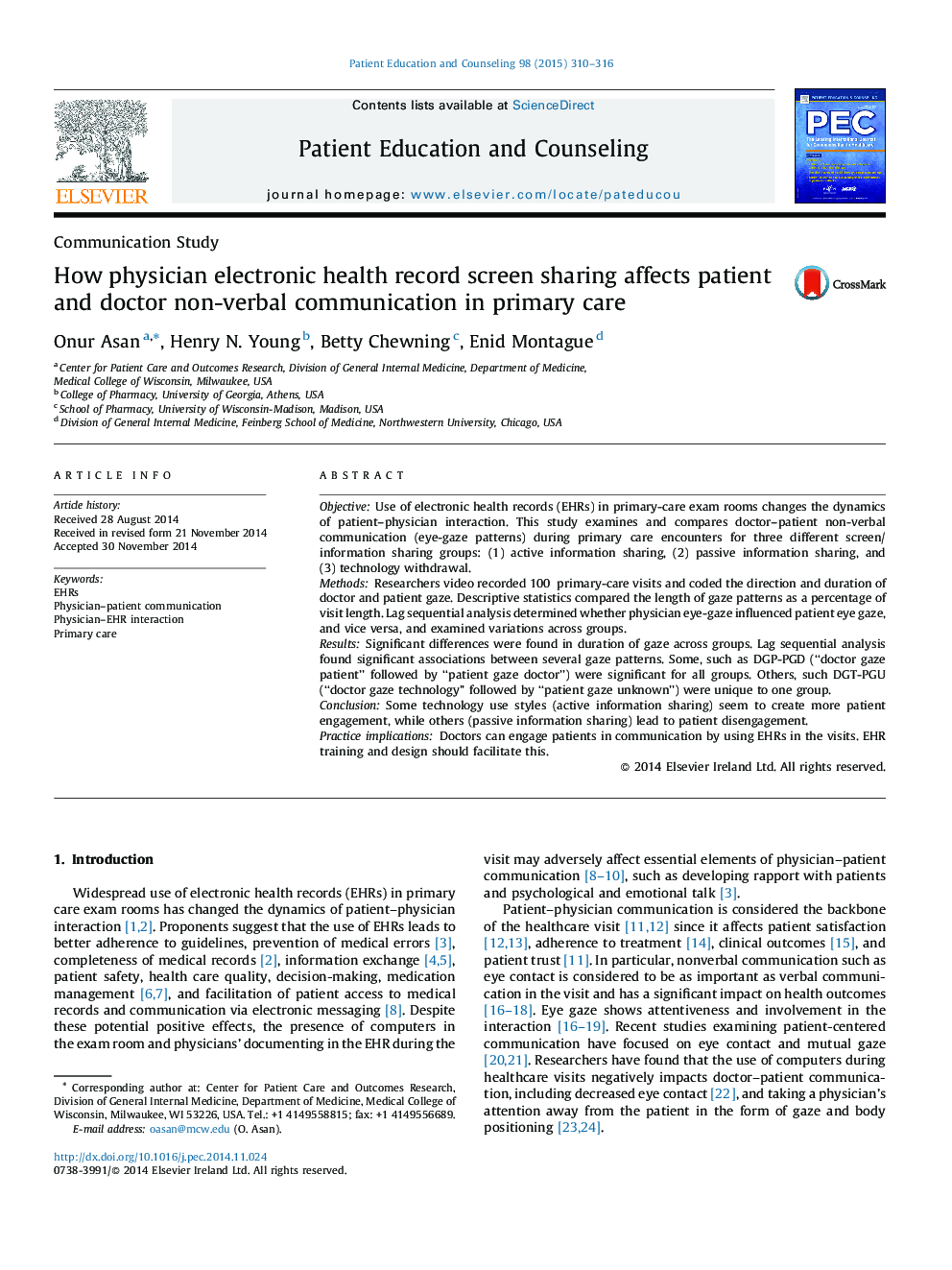| Article ID | Journal | Published Year | Pages | File Type |
|---|---|---|---|---|
| 6153658 | Patient Education and Counseling | 2015 | 7 Pages |
â¢Significant differences were found in eye gaze patterns across the groups.â¢Some technology use styles can engage patient more in the visit than others.â¢This study has implication for future EHRs which can enhance the communication.â¢This study has training implications for physicians for more efficient use of EHRs.
ObjectiveUse of electronic health records (EHRs) in primary-care exam rooms changes the dynamics of patient-physician interaction. This study examines and compares doctor-patient non-verbal communication (eye-gaze patterns) during primary care encounters for three different screen/information sharing groups: (1) active information sharing, (2) passive information sharing, and (3) technology withdrawal.MethodsResearchers video recorded 100 primary-care visits and coded the direction and duration of doctor and patient gaze. Descriptive statistics compared the length of gaze patterns as a percentage of visit length. Lag sequential analysis determined whether physician eye-gaze influenced patient eye gaze, and vice versa, and examined variations across groups.ResultsSignificant differences were found in duration of gaze across groups. Lag sequential analysis found significant associations between several gaze patterns. Some, such as DGP-PGD (“doctor gaze patient” followed by “patient gaze doctor”) were significant for all groups. Others, such DGT-PGU (“doctor gaze technology” followed by “patient gaze unknown”) were unique to one group.ConclusionSome technology use styles (active information sharing) seem to create more patient engagement, while others (passive information sharing) lead to patient disengagement.Practice implicationsDoctors can engage patients in communication by using EHRs in the visits. EHR training and design should facilitate this.
